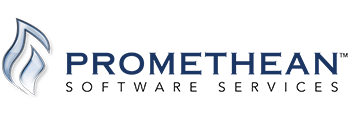As technology makes it easier for businesses to connect and supply chains to grow in complexity, third-party data breaches are becoming increasingly common. According to Mitratech’s Third Party Risk Management Study, 61% of respondents said they experienced a third-party data breach or other security incident in the last 12 months. This represents a significant 49% increase over the 2023 survey results and a 3x increase since 2021. SecurityScorecard’s Third Party Breach Report breaks this down further. In the manufacturing and automotive sector, 36.2% of all breaches reported in that industry came through a third party. In the technology sector, third party breaches accounted for 47.3% of all breaches. Both these figures outpace the cross-industry and worldwide average of 35.5%.

When evaluating third-party EDI solutions, it is important to understand the security risks involved in EDI. The primary risks include access risks, data security, secure communication, compliance with data protection regulations, monitoring and incident response, and vendor management.
Access Risks
One of the main cybersecurity risks associated with EDI is the potential for unauthorized access to data. Unauthorized access to EDI data could disrupt business operations and lead to financial losses.
Vendor management and third-party risk assessments are vital ways to ensure limited access to EDI data. Third-party EDI solutions should be able to demonstrate a commitment to security excellence. Resources like SecurityScorecard and SOC reports are helpful ways for companies to assess vendor risk.
Data Security
EDI involves the exchange of sensitive business data, including financial information, customer data, and other confidential information. Ensuring the security of this data is critical to protecting the organization’s and its trading partners’ sensitive information.
An A rating with SecurityScorecard is well above average. Compared to the worldwide average, a company that maintains a 2.9x less likely to be impacted by a breach, and a company with an F rating is 13.8x more likely to be breached.
Secure Communication
EDI relies on communication protocols that take advantage of encryption and authentication to establish secure connections and protect data from interception or tampering during transmission.
Standard protocols—such as AS2, SFTP, and FTPS—along with optional VPN tunnels provide encrypted, authenticated pathways that safeguard data as it moves between trading partners and the provider’s data center.
Compliance with Data Protection Regulations
Organizations engaged in EDI must comply with relevant data protection regulations depending on the type of data being exchanged. This includes implementing appropriate data security controls, data handling procedures, and consent management to ensure compliance with applicable regulations.
Many leading EDI providers also pursue independent SOC 2 Type 1 or Type 2 audits, demonstrating that their security, availability, confidentiality, processing integrity, and privacy controls perform as designed.
Security Monitoring and Incident Response
Continuous monitoring of EDI systems and networks for security events, such as suspicious activities or attempts at unauthorized access, is crucial to detect and respond to security incidents in a timely manner.
A fully managed EDI service combines 24/7 monitoring with automated alerting and incident response (IR) solutions, allowing teams to quickly respond to events without interrupting production.
Vendor Management
If an organization uses an external EDI solution provider, proper vendor management is essential to ensure that the provider follows adequate cybersecurity practices. This includes conducting due diligence on the vendor’s security measures, contractual agreements on data security and privacy, and ongoing monitoring of the vendor’s security posture.
In conclusion, third-party breaches are surging, and every EDI connection you manage can become an attacker’s easiest way in. Storing data in a private data center, encrypting every transaction, and monitoring around the clock, while adhering to SOC 2 level controls, keeps supply chain information flowing while keeping attackers out.
Promethean follows SOC2 standards and maintains an A rating with SecurityScorecard, demonstrating our commitment to security excellence and minimizing the risk that our clients become one of the thousands worldwide that suffer a third-party data breach. Contact us to learn how Promethean can safeguard your supply chain from third‑party breaches.

